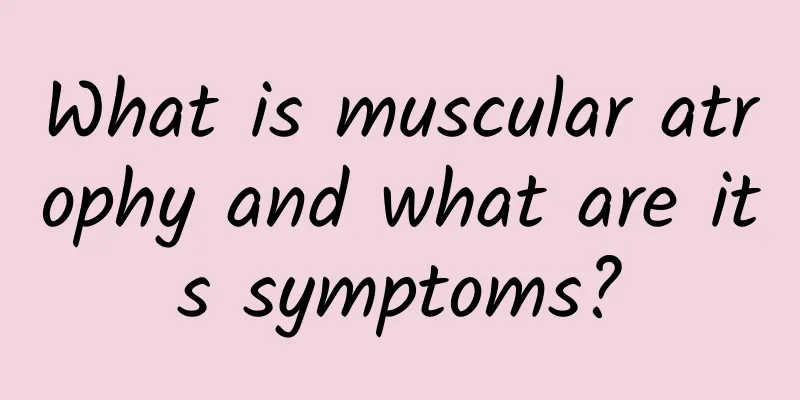What is muscular atrophy and what are its symptoms?

|
Atrophy of muscles throughout the body is generally caused by muscular dystrophy. The most obvious symptom of this disease is atrophy of muscles in the body. Some will atrophy slowly, while some patients will experience more rapid atrophy. You can learn more about this disease. The structure and function of the muscular system Human skeletal muscles generally have no less than 434 pieces, which account for 25% of the total body weight of a newborn and 40-45% of the body weight of an adult. All voluntary human activities are accomplished through muscle contraction. The blood supply required for muscle activity accounts for 12% of the total cardiac output and 18% of the body's oxygen consumption. Muscles are one of the important organs for human metabolism, especially sugar metabolism. Striated muscle is composed of many parallel muscle fibers. Myofiber is muscle cell, which is cylindrical in shape, with sarcoplasm inside and serous membrane outside. There are several myonuclei, many mitochondria, ribosomes and other cell organelles in the sarcoplasm, and it is penetrated by many longitudinal and transverse tubular sarcoplasmic reticulum. Certain parts of the sarcoplasmic reticulum store calcium ions. There is a concave fold on the serosa, which forms the motor end plate with the motor nerve endings and is the neuromuscular junction, that is, the synapse. Symptoms Thigh muscle atrophy: It is common for patients with femoral head necrosis to experience thigh muscle atrophy. The severity of muscle atrophy varies. Most patients with femoral head necrosis can recover from thigh muscle atrophy, but a few patients with femoral head necrosis cannot recover from thigh muscle atrophy throughout their lives, which seriously affects the patient's walking distance and quality of life. 100% of patients with mid-to-late stage femoral head necrosis have varying degrees of thigh muscle atrophy in the affected limb, which has a great impact on the walking of patients with femoral head necrosis, directly limiting the recovery of strength in the affected thigh, and also limiting the length of patients' walking. Calf muscle atrophy: Calf muscle atrophy refers to striated muscle dystrophy, in which the muscle volume is smaller than normal, the muscle fibers become thinner or even disappear. Hand muscle atrophy: It is a type of muscle atrophy. Muscular atrophy refers to the reduction in muscle volume caused by nutritional disorders of skeletal muscles, thinning or even disappearance of muscle fibers. |
<<: How to prevent presbyopia, what are the methods
>>: What are the symptoms of congenital heart disease in adults?
Recommend
Sore throat, swollen lymph nodes
Colds and fevers are common diseases that people ...
What happens if the coccyx is broken?
The coccyx is at the very end of the spine, and i...
I took gastrointestinal anti-inflammatory drugs and had heart pain
Many people do not pay attention to their diet an...
How to tell if your child has worms in his stomach
Many children will have stomachaches because they...
Causes of Dandruff
Too much dandruff causes great trouble to people&...
What happens if you speak during the silent period?
We all know that when polyps appear on the vocal ...
Is it good to have a fever and sweat?
Fever actually happens to everyone, but some frie...
Symptoms of male sexual dysfunction
As a man, the thing he fears most is hearing othe...
Why does my breast hurt when I take off my bra?
Breast pain when taking off underwear may be caus...
What is the regulatory function of adrenal medulla secretion?
Everyone is familiar with adrenaline, right? Many...
How to use toothpaste to prolong sexual intercourse
Toothpaste is a necessity in our lives and is used...
What fruits are good to eat when you have a fever?
Fever is a common symptom. There are many reasons...
What to eat for stomach problems?
1. Supplement vitamin C: Vitamin C has a protecti...
What are the soups for clearing heat and removing dampness in autumn?
In every season, there are some seasonal delicaci...
What are the symptoms of baby's intestinal gas
Every newborn is a gift from God to its mother. O...









